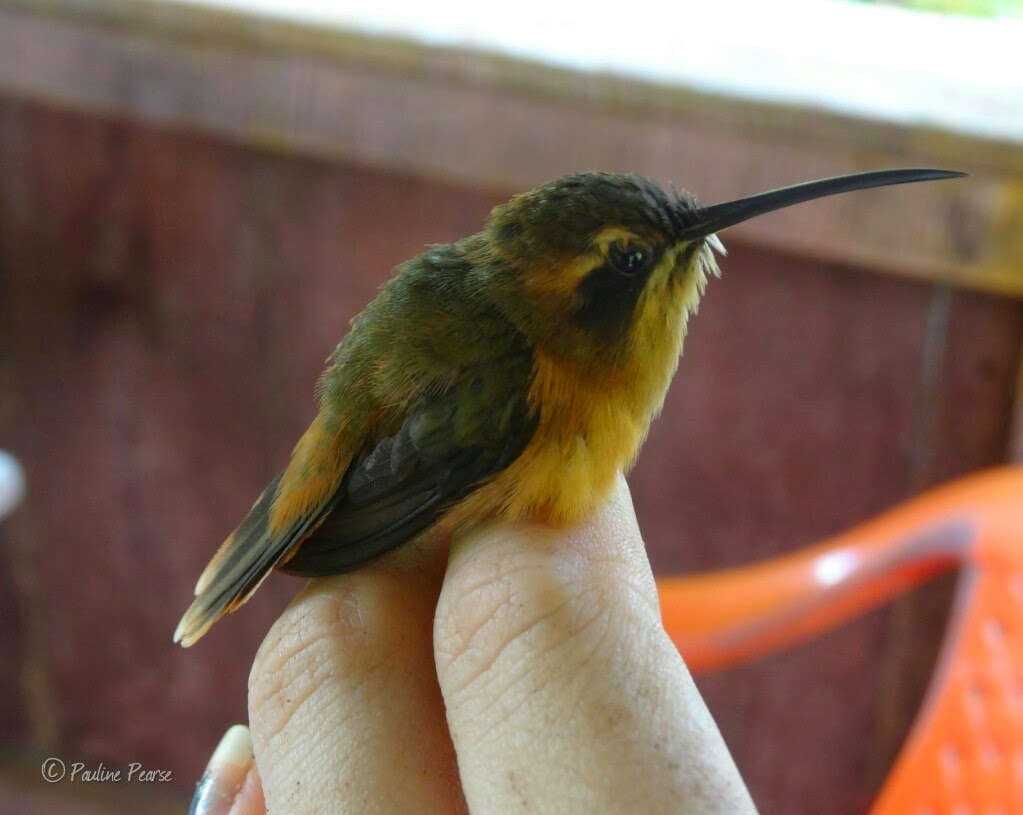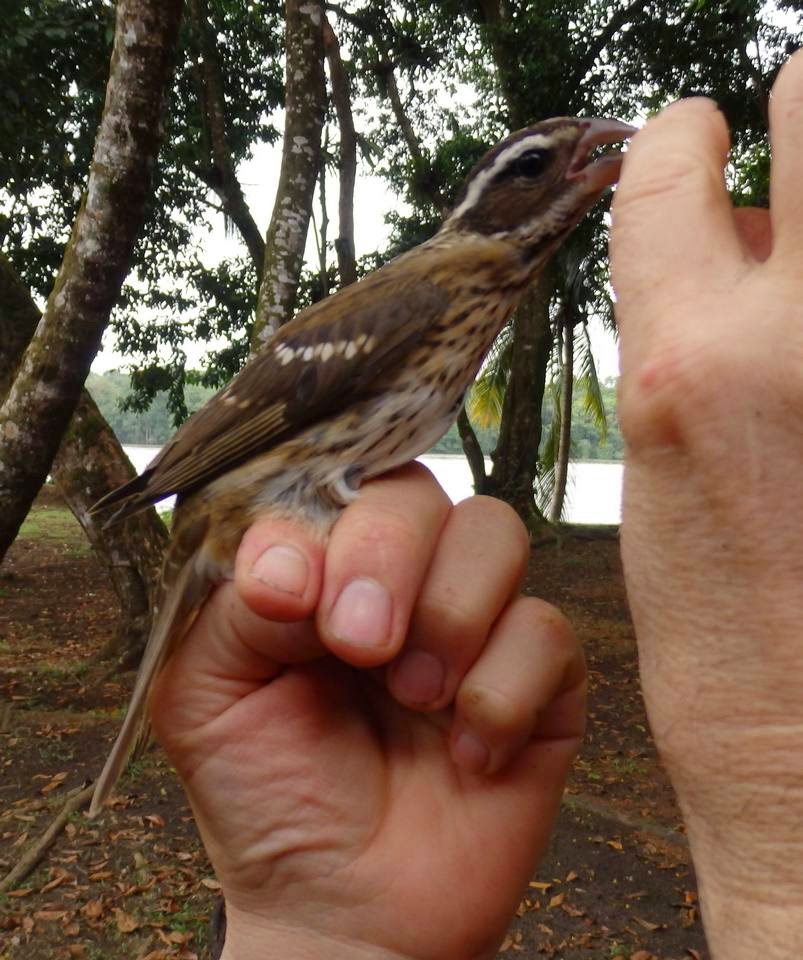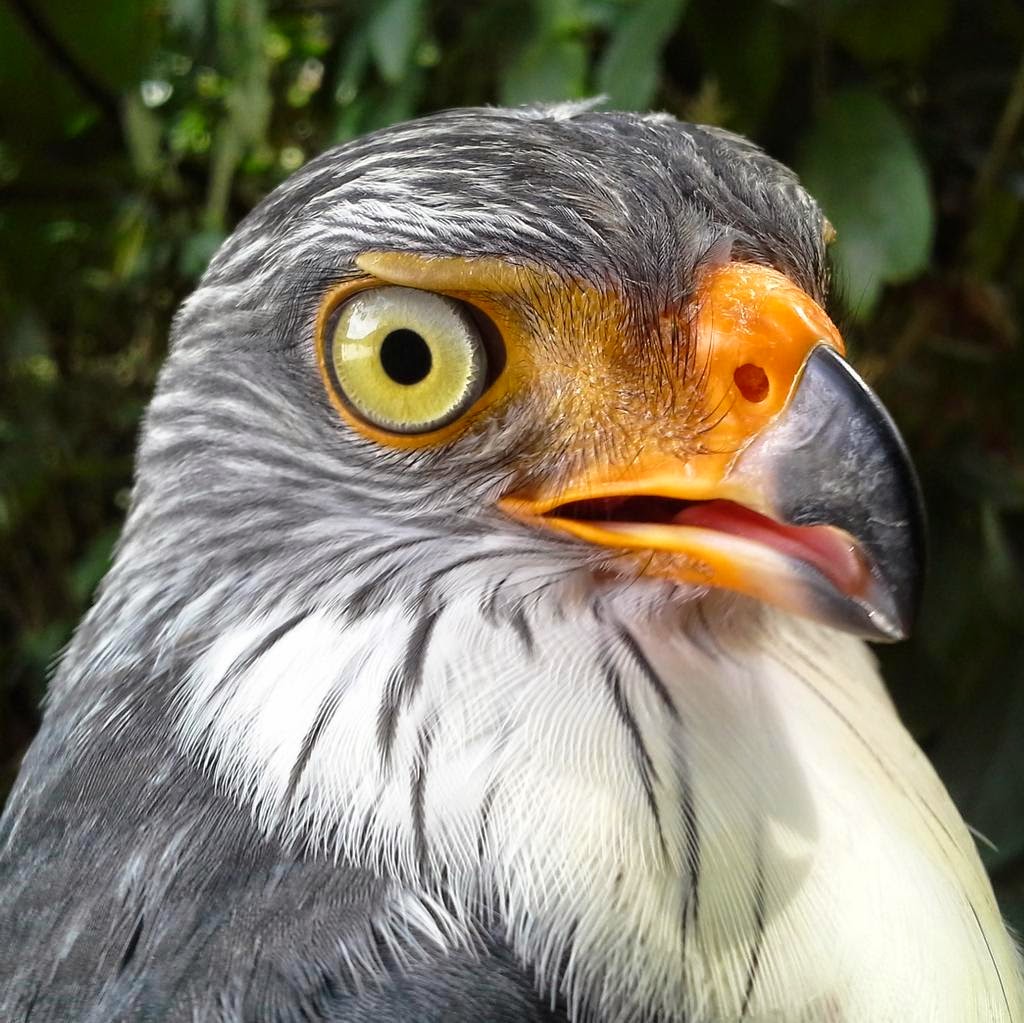Our final session was at our Tortuga Lodge site, which funny enough is where we were banding today.
....she has a bite !!
Last Fall season Wendy and I captured 1568 birds of 72 species in 40 continuous days banding based here in Tortuguero. A look back to our blog for this day last year here
A Swainson's Thrush... 502 captured in 2013, 94 so far in 2014...
This year I started banding a day earlier, on the18th September, after nine days (26th September) we left the Caribbean coast and banded in the Highlands for 14 days returning here and recommenced banding on the 16th October.
Therefore our data is not directly comparable but I will do some comparisons when home !
Our total to date....409 captured of 59 species in the 22 days here at Tortuguero, and we are planning to band here until the 14th November. Another 17 more 6 hour visits to the five standard banding sites here at Tortuguero..
A bit of time to highlight some of the species we haven't caught before at Tortuguero..
.....or are just awesome birds !
This White-eyed Vireo was an excellent discovery on the 26th, I'm sure the second edition of Garrigues & Dean, Birds of Costa Rica (due, Dec 2014) will have updated the status from rare, four have been caught on this project now - first in 2012.
This a Plain-brown Woodcreeper...found at Cano Palma on the 20th.
One of the largest, with subtle head and neck markings. Only the second I've seen - amazed it was a retrap !
From 46.8g - the weight of tha above Woodcreeper.... to 2.4g !!
The weight of this Stripe-throated Hermit, Cano Palma on the 20th. We don't see much of these bee size hummingbirds, or we mistake them for insects...
During banding sessions time to learn too,
Adult and first (hatch) year Red-eyed Vireo wings being compared.
I've seen a couple in Canada,and banded quite few here.
Prothonatory Warbler, along with Northern Waterthrushes, provide a good percentage of re-wintering recaptures. Figures when home, but c10 % of each species maybe returning site-faithful birds.
A couple of shots to finish tonight....our boat leaves at 5am to take us to Cano Palma !
At Cano, our banding station, is in the crows nest above the boat dock !
The outstanding birds,....
Collared Aracaris, and this Chestnut-colored Woodpecker.




































